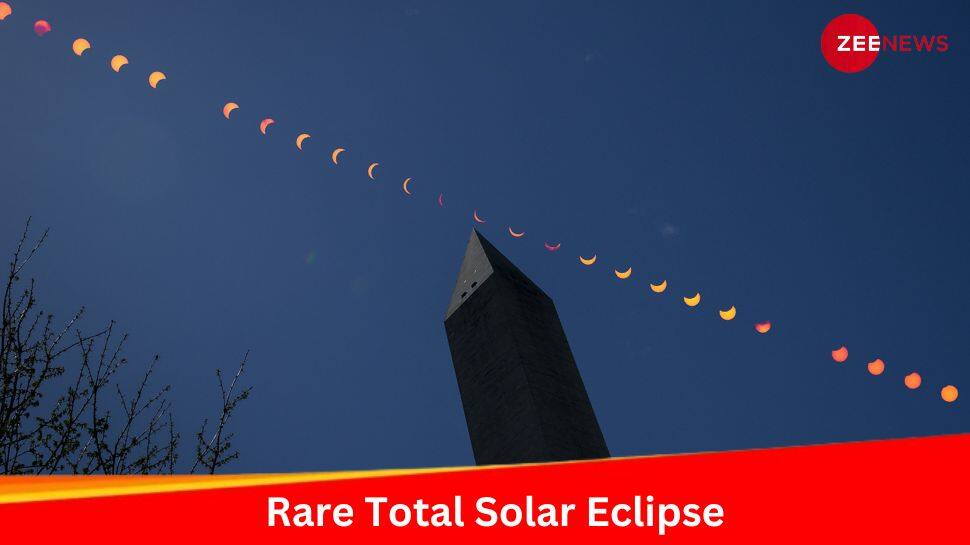North America was enveloped in eclipse fever as the stunning celestial event captivated tens of millions. The United States, Mexico, and Canada witnessed a rare total solar eclipse on Monday. As millions of people across regions of these countries watched the narrow path of the totality of the moon fully covering the sun, the event brought together science and daytime revelry.
The moon’s shadow made the Pacific coast of Mexico completely dark at 11:07 am local time (1807 GMT). Then it zoomed across the United States fast, heading back over Canada’s Atlantic coast and disappearing into the ocean less than an hour and a half later.
Vacay Spots, All Booked
Hotels and vacation rentals in popular viewing spots such as Texas, Arkansas, Ohio, and Maine were fully booked months ahead of time. In Ingram, Texas, visitors from all over the globe gathered at Stonehenge II Park, a replica of the famous English monument, despite cloudy skies.
Follow, follow the Sun / And which way the wind blows / When this day is done
Today, April 8, 2024, the last total solar #eclipse until 2045 crossed North America. pic.twitter.com/YH618LeK1j
— NASA (@NASA) April 8, 2024
Mazatlan, a popular beach resort in Mexico, was among the initial major observation locations in North America. The partial eclipse commenced near Eagle Pass in southern Texas, at the United States’ southern border with Mexico, signalling the eclipse’s onset in the country.
Longstanding Effects Of Solar Eclipse
When the moon moves between the sun and the earth during a solar eclipse, it causes changes in temperature, wind speed, and humidity on the earth’s surface. In the path where the sun is completely blocked (the path of totality), temperatures can drop by about 10 degrees Fahrenheit. Additionally, humidity may increase, and there could be changes in wind and cloud cover.
Scientists learn more about how solar material flows from the sun by studying it during eclipses. This knowledge helps them understand space weather, which involves charged particles called plasma interacting with the Earth’s upper atmosphere, known as the ionosphere.
The ionosphere is where many low-Earth orbit satellites and radio waves operate. So, changes in space weather affect GPS and long-distance radio communications.
NASA’s Live Stream on YouTube
NASA broadcasted a captivating live stream of the eclipse on its official YouTube channel for viewers to enjoy. The western and northern areas of New York State witnessed a total eclipse for the first time in almost a hundred years.
NASA also released an advisory emphasising safety while watching the total solar eclipse. Earlier, it shared a post on X, stating, “We want you to watch the total solar eclipse.” We just don’t want it to be the last thing you see.”
NASA stressed that it is not safe to look directly at the sun without specialised eye protection for solar viewing.
Ever seen a total solar #eclipse from space?
Here is our astronauts’ view from the @Space_Station pic.twitter.com/2VrZ3Y1Fqz
— NASA (@NASA) April 8, 2024
“Except during the brief total phase of a total solar eclipse, when the Moon completely blocks the Sun’s bright face, it is not safe to look directly at the Sun without specialised eye protection for solar viewing,” it said.
The general guidelines said that normal sunglasses, no matter how dark they are, cannot be used as gear to watch as they may hurt the eyes badly. Adding, “Do not look at the sun through a camera lens, telescope, binoculars, or any other optical device.
